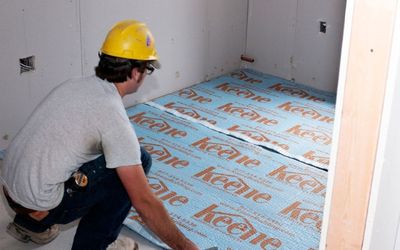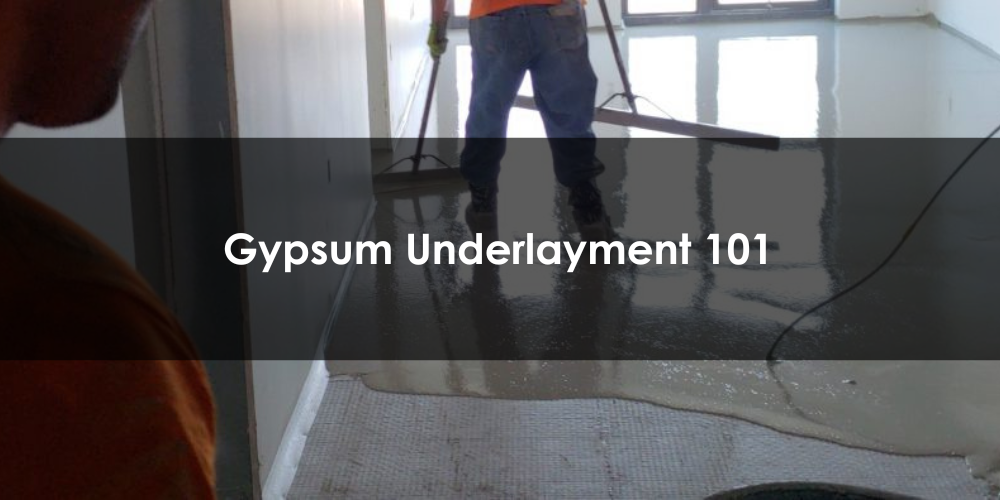Gypsum Underlayment
What is gypsum underlayment?
Also called gypsum concrete, cementitious underlayment, Gypcrete, or Levelrock, gypsum underlayment is a mixture of gypsum powder, Portland cement, and sand. It is commonly used in floor/ceiling assemblies in commercial wood-framed construction. The ratio of ingredients changes based on the specific mix design, which influences the psi of the finished assembly.
Nettles Construction Solutions batch mixes the gypsum underlayment material onsite, using a pump connected to the building’s water line. Then, long hoses are used to pump the material into the pour location.
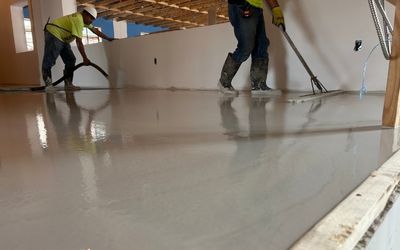
Common applications of gypsum and elevated concrete

Floor
leveling
Gypsum underlayment can be used to level uneven floors. Our team finds the lowest and highest points on the floor and labels the lowest point zero. Then, we create a grid of string across the rest of the floor and measure its distance away from zero, before pouring gypsum underlayment to meet the string. This method is one of the most reliable and cost-effective methods of achieving level flooring. Once cured, it achieves a compressive strength similar to that of traditional concrete.
To add sound insulation to a gypsum underlayment floor assembly, we add a ⅛-inch sound mat between the plywood and the gypsum layer. Different sound mat widths may be used, depending on the level of sound insulation required. Gypsum underlayment is one of the few proven methods for achieving effective sound control.
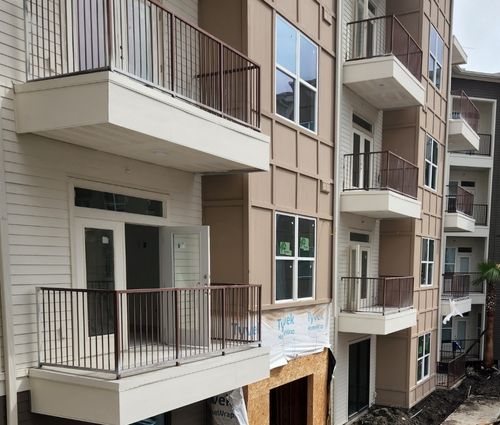
Elevated/lightweight concrete
Lightweight concrete can be used in the construction of balconies, breezeways, and other elevated structures where weight is at a premium. Although this concrete material is lighter weight than traditional concrete, it is not true lightweight insulating concrete: it is a mixture of sand, ⅜’’ pea gravel, fly ash, cement and other additives that achieves the required psi and provides a stable walking surface.
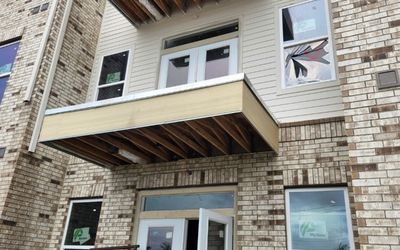
Waterproofing
A 1.5-inch to 3-inch layer of lightweight concrete can be poured onto wood-framed exterior balconies, breezeways, stair landings, and other building components exposed to the elements as part of a waterproofing system. This system consists of metal base flashing, membrane, aluminum T bar, drip edge, door pains, and drainage mats that prevents water infiltration into the living space and provides a durable, lasting walking surface. In our Kansas City service area, we apply a fluid paint coating to the plywood before pouring the concrete, which provides reliable and effective waterproofing to the structure.
What are the advantages of gypsum underlayment over traditional concrete?
Gypsum offers a number of benefits over other materials, including:
- Fast installation: Gypsum requires minimal surface preparation, and is cured enough to walk on 2 hours after being poured, decreasing the overall installation time.
- Can be poured into very tight or constrained areas: Because of the material’s light weight and high flowability, it can be pumped from hundreds of feet away and can be poured even into very narrow or constrained spaces.
- Built-in fire rating: A ¾-inch layer of gypsum over a ¾-inch plywood board achieves a 1-hour fire rating.
Want to learn more?
Read our comprehensive gypsum underlayment buyer’s guide to learn everything you may need to know before purchasing.
Why choose Nettles as your gypsum underlayment contractor?
We have been a trusted and well-respected contractor and installer of gypsum underlayment and elevated concrete for over 40 years. We are experts in mix design, onsite batching and pumping, complex leveling projects, and every other application of gypsum underlayment. Our crew is professional and experienced, meaning we’ll ensure your project is completed on time, on budget, and with the highest-quality materials and service.
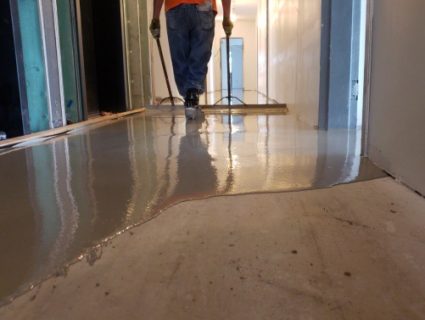
Gypsum underlayment FAQs
No–the Nettles team will bring all materials except for water.
The concrete poured in elevated concrete applications is not true lightweight insulating concrete–it’s a mixture of sand, fly ash, and cement that creates a concrete lighter than traditional concrete that is well-suited for balconies and breezeways.
We can pour gypsum as long as the internal building temperature is above 50 degrees Fahrenheit.
Our pricing is determined by a number of factors, including the volume of pour, distance to the worksite, and number of setups needed.
No–all balconies and breezeways should be sloped (¼’’ per foot) to allow water to run off them.
Talk to an expert

Sasa Scherzer
281.995.1575
sasa.scherzer@nettlescs.com

Nolan Henderson
316.619.1072
nolan.henderson@nettlescs.com

Adam Zink
816.215.5379
adam.zink@nettlescs.com
Have questions?
"*" indicates required fields


